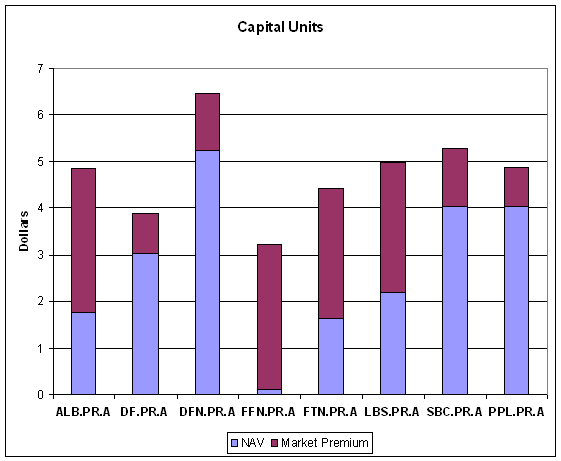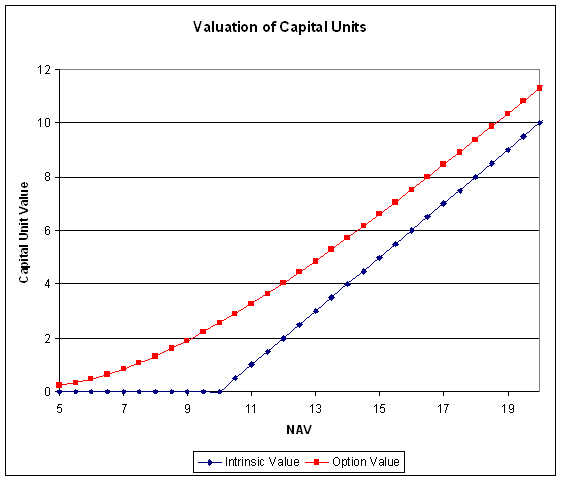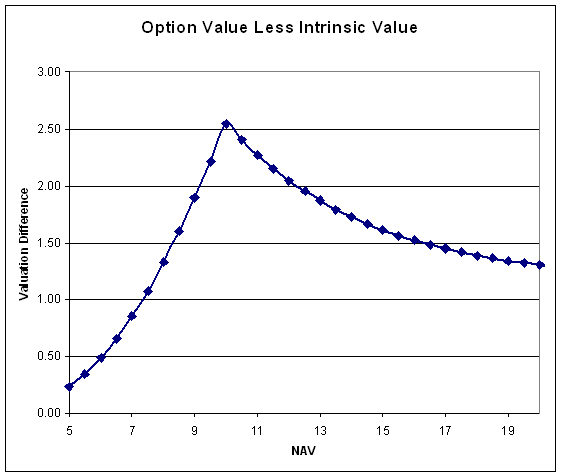Alarms are sounding about a possible Chinese bank crisis:
China faces a 60 percent risk of a banking crisis by mid-2013 in the aftermath of record lending and surging property prices, according to a Fitch Ratings gauge.
The assessment is from a macro-prudential monitor used by the ratings company, Richard Fox, a London-based senior director, said in a phone interview on March 4.
…
The indicator signaled crises in Iceland and Ireland and has been tested back to the 1980s, Fox said.
…
The indicator’s failures have included not sounding an alarm about the banking system in Spain, he added.
…
Banking systems in emerging markets are vulnerable to systemic stress when credit growth exceeds 15 percent annually over two years with real property prices rising more than 5 percent, according to Fitch. Credit growth in China averaged 18.6 percent annually over 2008 and 2009 as house prices jumped, according to the ratings company.The fallout from China’s lending spree may be bad loans totaling $400 billion, according to Hong Kong-based advisory firm Asianomics Ltd.
Some countries in the euro region may have their credit ratings cut further while a Greece debt default is a “possibility,” said Moritz Kraemer, managing director of European sovereign ratings at Standard & Poor’s.
Asked if the worst was over for the region’s sovereign credit-rating outlook, Kraemer said: “I wish I could say yes, but the answer is no.”
“We still have a number of countries with a negative outlook or CreditWatch negative, indicating their credit ratings may be going down further,” Kraemer said in an interview in London. “Trigger points for that could be slippage in fiscal consolidation and structural reforms, but also decisions that will be taken at the European level later this month.”
S&P said on March 1 it kept Portugal’s A-long-term, A2 short-term and Greece’s BB+ long-term ratings on CreditWatch with a negative outlook. It cited Portugal’s “high external financing need and limited funding sources.” Moody’s Investors Service downgraded Greece’s government bond ratings yesterday to B1 from Ba1 , and assigned a negative outlook to the rating.
And more gloom on US mortgages:
Bank of America Corp. (BAC), the biggest U.S. lender by assets, is segregating almost half its 13.9 million mortgages into a “bad” bank comprised of its riskiest and worst-performing “legacy” loans, said Terry Laughlin, who is running the new unit.
…
The legacy portfolio will hold 6.7 million of loans with outstanding principal balance of about $1 trillion, according to a presentation to investors today. The split leaves home loan President Barbara Desoer with about half her previous portfolio, as well as new lending going forward.Laughlin’s portfolio will include loans that are currently 60 or more days delinquent as well as riskier types of loans the bank no longer originates, such as subprime, Alt-A, interest- only and option adjustable-rate mortgages, he said. He said the portfolios will be completely split by March 31 and that his will be liquidated over time. Of the 13.9 million loans Bank of America services, about 3.5 million are held by the company on its balance sheet. The rest are owned by other investors.
There’s a rather odd perspective on the Charlie Sheen spectacle:
Second, he’s the talent. A hedge fund wouldn’t fire the star trader if he was a drug user or an alcoholic. It would have to get rid of half the staff if it did.
Which is why hedge funds blow up with such amazing regularity. I think it’s just sad: we have a guy who has achieved enormous success and can’t handle it. After pondering whether he was lucky or smart, he’s not just chosen “smart”, but gone beyond, into “completely irreplacable and personally indestructible.” It happens all the time, not just in Hollywood and Wall Street, but everywhere, sometimes with a definitions of “enormouse success” that most of us would consider “a good start”, causing an immense amount of pain and waste of talent.
If any employee of mine were ever to be found doing coke, he’d be out on his ass instantly, lawsuits and employer accomodation of addictions be damned. It’s cheaper in the end, as the Bishop said to the choir-boy.
A top jurist has condemned plea bargaining as a form of coercion that tempts an intolerable number of innocent people into pleading guilty to avoid a harsh sentence.
Mr. Justice Marc Rosenberg of the Ontario Court of Appeal urged a thorough review of plea bargaining – a system that has become so entrenched in the past three decades that 90 per cent of criminal cases result in a guilty plea.
We can get rid of negotiated settlements in the securities industry while we’re at it.
Hats off to the Proceeds of Crime Act! Another way to build up slush funds like Brampton’s:
The Peel Police Services Board has bought tens of thousands of dollars worth of tickets to private mayoral galas in Brampton and Mississauga, using “proceeds of crime” that in Ontario typically go to victim and crime prevention programs.
The tickets were purchased over the years while Brampton Mayor Susan Fennell and a fundraising organizer of Mississauga Mayor Hazel McCallion sat on the board — and with the approval of Peel Region chair Emil Kolb, who also heads the police board.
Minutes show, for example, that the board approved buying a $4,000 table at Fennell’s gala on Feb. 20 last year, on Fennell’s invitation. A month before the gala took place, then-board member Jim Murray put forward a motion to buy a second table. It was approved.
…
[Peel Region chair Emil] Kolb, who has chaired the police board since 1996, acknowledged that the board routinely approves such purchases, but points out that it’s not tax-generated dollars being spent.“It’s funds that come from crime funds. Not one red cent is taxpayer dollars.”
Kolb should be fired – not just for reckless misuse of funds, but for general stupidity. Once it’s in the coffers, pal, it’s taxpayer’s money. Every goddam penny, regardless of whether it’s taxes, fees, fines, gifts or proceeds of crime. It’s not yours to do political favours for your buddies. Asshole.
It was a mixed day on the Canadian preferred share market, with PerpetualDiscounts losing 10bp, FixedResets flat and DeemedRetractibles gaining 16bp. Volatility was subdued with only one entry in the Performance Highlights table. Volume was heavy.
| HIMIPref™ Preferred Indices These values reflect the December 2008 revision of the HIMIPref™ Indices Values are provisional and are finalized monthly |
|||||||
| Index | Mean Current Yield (at bid) |
Median YTW |
Median Average Trading Value |
Median Mod Dur (YTW) |
Issues | Day’s Perf. | Index Value |
| Ratchet | 0.00 % | 0.00 % | 0 | 0.00 | 0 | 0.1669 % | 2,395.6 |
| FixedFloater | 0.00 % | 0.00 % | 0 | 0.00 | 0 | 0.1669 % | 3,603.0 |
| Floater | 2.50 % | 2.26 % | 45,011 | 21.56 | 4 | 0.1669 % | 2,586.6 |
| OpRet | 4.88 % | 3.58 % | 57,856 | 1.01 | 9 | -0.0945 % | 2,389.8 |
| SplitShare | 5.09 % | 3.01 % | 211,851 | 1.03 | 5 | 0.2862 % | 2,484.4 |
| Interest-Bearing | 0.00 % | 0.00 % | 0 | 0.00 | 0 | -0.0945 % | 2,185.3 |
| Perpetual-Premium | 5.74 % | 5.55 % | 128,593 | 6.16 | 10 | 0.0318 % | 2,032.8 |
| Perpetual-Discount | 5.53 % | 5.65 % | 126,574 | 14.34 | 14 | -0.1003 % | 2,112.6 |
| FixedReset | 5.21 % | 3.52 % | 189,320 | 2.98 | 54 | -0.0049 % | 2,280.0 |
| Deemed-Retractible | 5.23 % | 5.27 % | 363,399 | 8.27 | 53 | 0.1565 % | 2,078.8 |
| Performance Highlights | |||
| Issue | Index | Change | Notes |
| ELF.PR.G | Deemed-Retractible | 1.63 % | YTW SCENARIO Maturity Type : Hard Maturity Maturity Date : 2022-01-31 Maturity Price : 25.00 Evaluated at bid price : 20.55 Bid-YTW : 7.27 % |
| Volume Highlights | |||
| Issue | Index | Shares Traded |
Notes |
| SLF.PR.B | Deemed-Retractible | 125,321 | Desjardins crossed 100,000 at 23.20; Nesbitt crossed 18,200 at 23.25. YTW SCENARIO Maturity Type : Hard Maturity Maturity Date : 2022-01-31 Maturity Price : 25.00 Evaluated at bid price : 23.20 Bid-YTW : 5.69 % |
| TD.PR.I | FixedReset | 66,330 | RBC crossed 49,900 at 27.45. YTW SCENARIO Maturity Type : Call Maturity Date : 2014-08-30 Maturity Price : 25.00 Evaluated at bid price : 27.43 Bid-YTW : 3.49 % |
| TD.PR.E | FixedReset | 65,850 | Desjardins crossed 36,000 at 27.42; TD crossed 23,000 at the same price. YTW SCENARIO Maturity Type : Call Maturity Date : 2014-05-30 Maturity Price : 25.00 Evaluated at bid price : 27.39 Bid-YTW : 3.40 % |
| BMO.PR.M | FixedReset | 53,825 | TD crossed 25,000 at 26.25; then anouther 25,000 at 26.20. YTW SCENARIO Maturity Type : Call Maturity Date : 2013-09-24 Maturity Price : 25.00 Evaluated at bid price : 26.21 Bid-YTW : 3.05 % |
| TRP.PR.A | FixedReset | 53,676 | TD crossed 49,400 at 25.89. YTW SCENARIO Maturity Type : Call Maturity Date : 2015-01-30 Maturity Price : 25.00 Evaluated at bid price : 25.81 Bid-YTW : 3.63 % |
| MFC.PR.D | FixedReset | 45,701 | TD crossed 15,800 at 27.37. YTW SCENARIO Maturity Type : Call Maturity Date : 2014-07-19 Maturity Price : 25.00 Evaluated at bid price : 27.37 Bid-YTW : 3.59 % |
| There were 50 other index-included issues trading in excess of 10,000 shares. | |||
| Wide Spread Highlights | ||
| Issue | Index | Quote Data and Yield Notes |
| BNS.PR.Z | FixedReset | Quote: 24.40 – 24.85 Spot Rate : 0.4500 Average : 0.3368 YTW SCENARIO |
| BAM.PR.H | OpRet | Quote: 25.40 – 25.74 Spot Rate : 0.3400 Average : 0.2526 YTW SCENARIO |
| GWO.PR.M | Deemed-Retractible | Quote: 25.45 – 25.79 Spot Rate : 0.3400 Average : 0.2541 YTW SCENARIO |
| BAM.PR.M | Perpetual-Discount | Quote: 21.45 – 21.74 Spot Rate : 0.2900 Average : 0.2105 YTW SCENARIO |
| ENB.PR.A | Perpetual-Premium | Quote: 25.00 – 25.19 Spot Rate : 0.1900 Average : 0.1305 YTW SCENARIO |
| CM.PR.M | FixedReset | Quote: 27.70 – 27.95 Spot Rate : 0.2500 Average : 0.1933 YTW SCENARIO |


